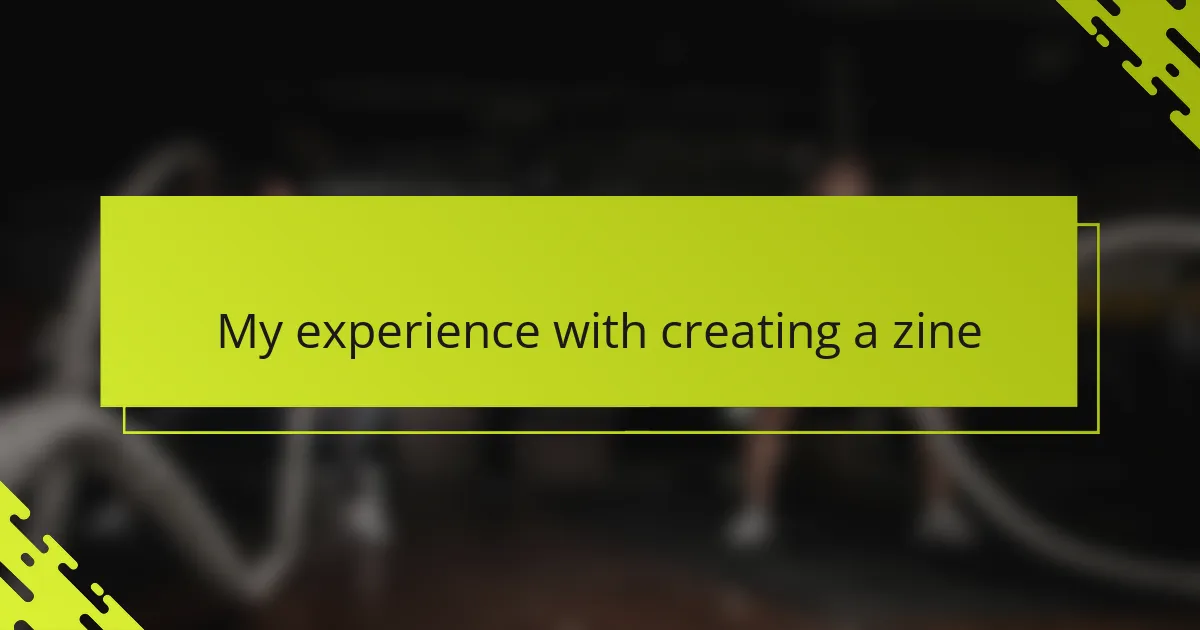Key takeaways
- Queer women culture is a rich blend of identity, art, and community, emphasizing emotional resilience and solidarity.
- Zines serve as a medium for self-expression and connection, allowing marginalized voices to share their stories authentically.
- Creating a zine involves careful planning to uplift diverse voices while balancing creativity with practical aspects like budgeting and distribution.
- Embracing imperfections in design fosters authenticity, making the zine feel relatable and genuine to its audience.
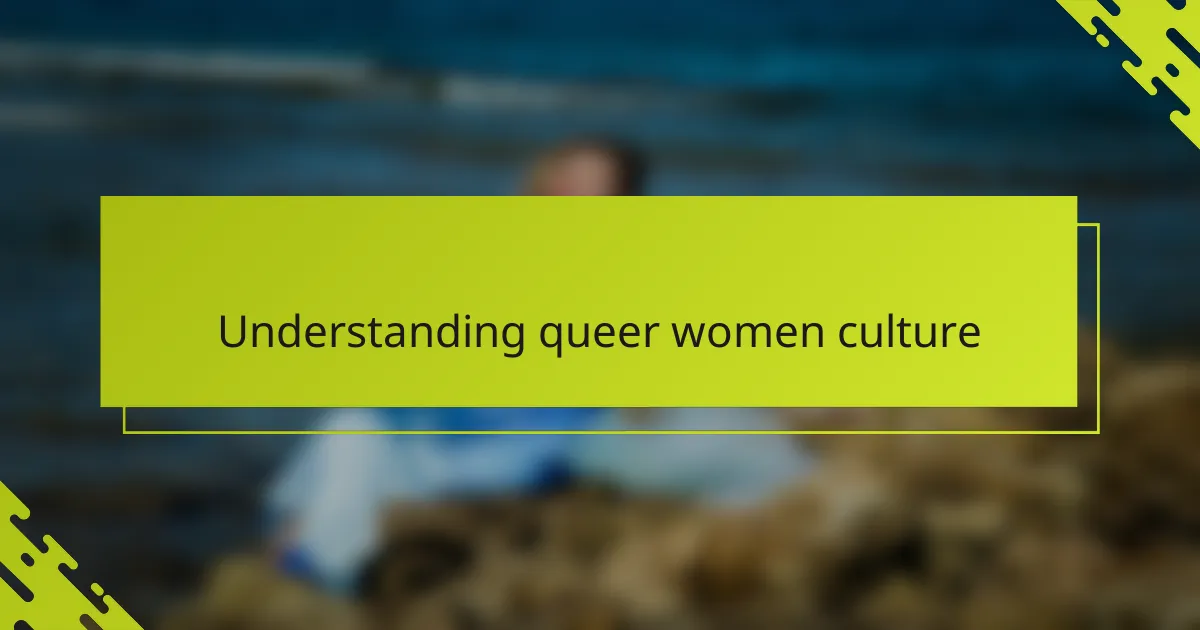
Understanding Queer Women Culture
Understanding queer women culture is like stepping into a world full of rich stories and diverse expressions. What strikes me most is how deeply it intertwines identity, art, and community—each element shaping the other in ways I hadn’t fully appreciated before. Have you ever felt the powerful connection of being part of a space where your whole self is not only accepted but celebrated?
I remember the first time I realized that queer women culture isn’t just defined by labels—it’s a vibrant mix of histories, struggles, joys, and creativity. For me, this realization came through zines and grassroots art, which felt like an authentic heartbeat, unfiltered and raw. It made me wonder: how often do mainstream narratives miss out on these intimate pieces of lived experience?
What resonates deeply with me is the emotional resilience and solidarity that courses through queer women communities. It’s not just about surviving in a world that often misunderstands but about thriving with fierce love and unapologetic authenticity. Isn’t it inspiring how this culture reclaims space in its own unique language and style?
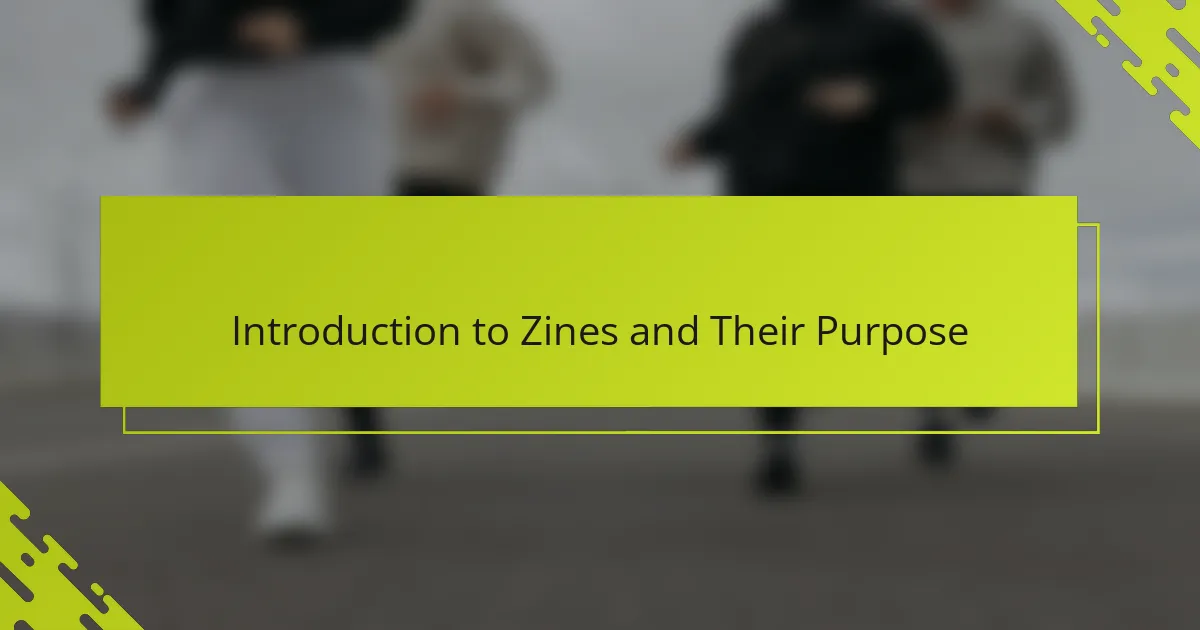
Introduction to Zines and Their Purpose
Zines have always struck me as these beautiful little pockets of rebellion and creativity. They’re self-published booklets or magazines that anyone can make, often outside the control of mainstream media. I find it fascinating how they give voice to stories and perspectives that might otherwise be silenced or ignored.
What I appreciate most about zines is their raw honesty. When I first held a queer women’s zine, it felt like stepping into someone’s private world—so personal, so unpolished, yet so powerful. Have you ever encountered something that, despite its simplicity, spoke volumes about identity and community?
For me, zines serve a purpose far beyond just sharing information. They build connection and foster understanding in ways mainstream channels often can’t. It’s like passing along a secret, a piece of culture created by and for those who know what it truly means to belong.
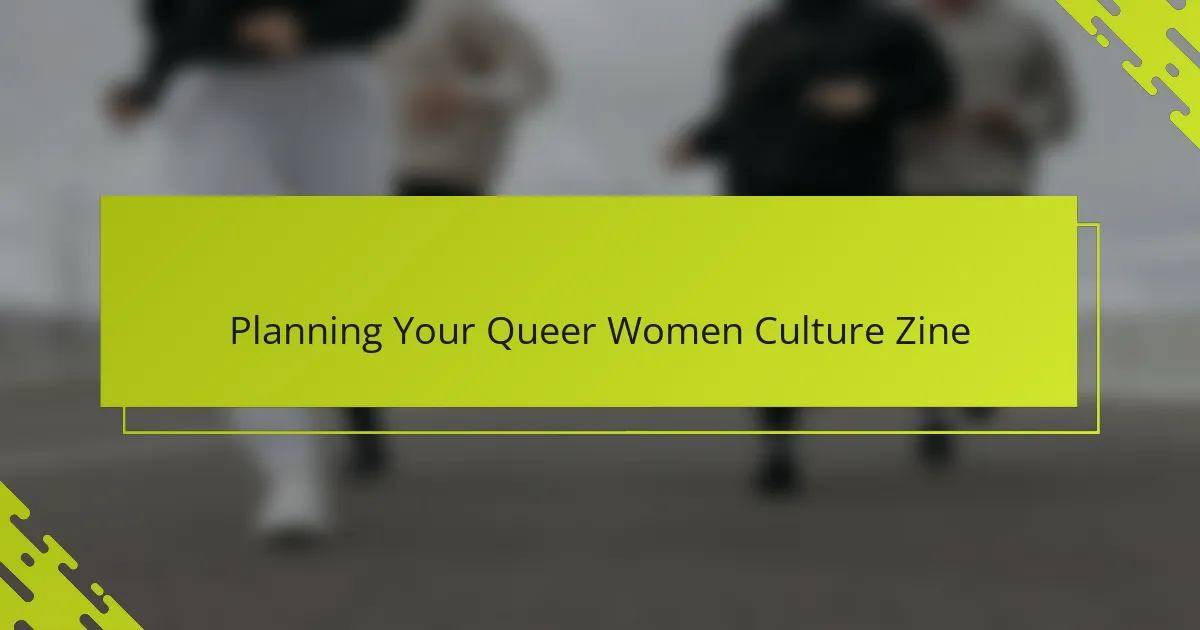
Planning Your Queer Women Culture Zine
When I started planning my queer women culture zine, the first thing I realized was the importance of knowing whose voices I wanted to uplift. It wasn’t just about filling pages; it was about creating a space where authenticity could breathe freely. How often do we get to curate stories that truly reflect the nuances of our community?
Choosing themes felt like both a creative challenge and a deep responsibility. I wanted each issue to resonate with real emotions and experiences—whether that was celebration, struggle, or raw vulnerability. Picking what to feature wasn’t always straightforward, and sometimes I caught myself overthinking, but I learned that trusting intuition made all the difference.
Budgeting and distribution were practical hurdles I hadn’t anticipated at first. Should I go digital, print them myself, or reach out to local queer networks? Navigating these choices taught me that planning a zine is as much about community connection as it is about content. Have you ever had to balance passion with logistics? It’s tricky but deeply rewarding.
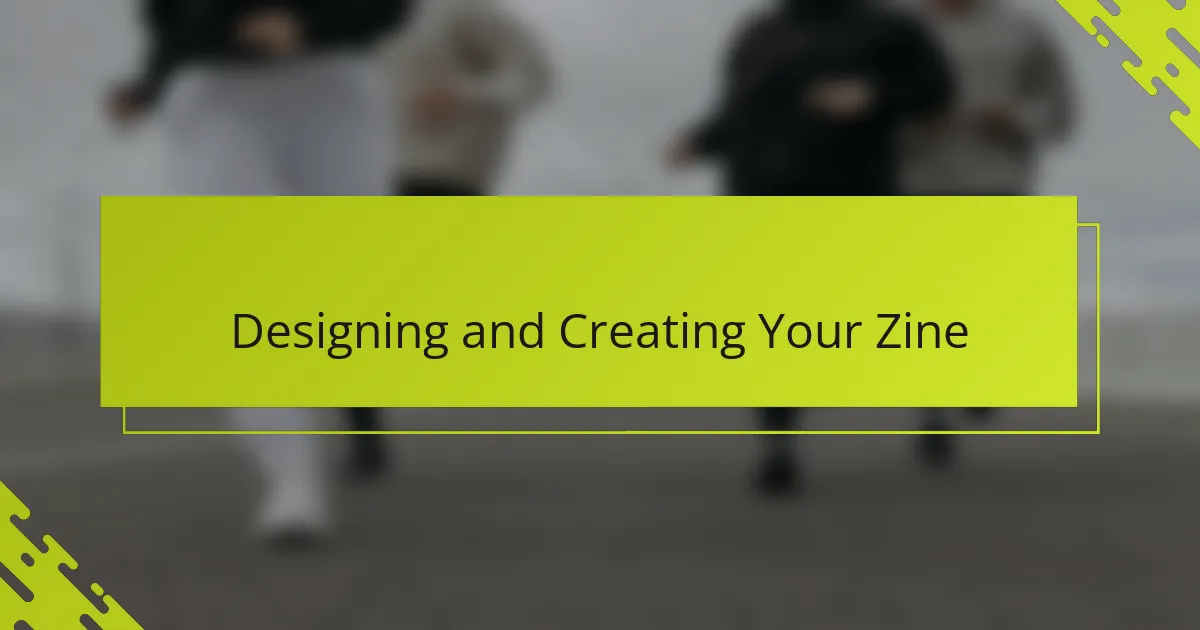
Designing and Creating Your Zine
Designing my zine felt like painting with words and images, a way to channel not just ideas but feelings. I found myself experimenting with layouts, mixing handwritten text with collage art, as if each page needed to hold a tactile piece of my heart. Have you ever noticed how the act of physically arranging content can shape the story you want to tell?
Creating each page was both exhilarating and nerve-wracking. I recall staying up late, tweaking colors and fonts, wanting everything to feel true to the community’s spirit but also accessible and inviting. It taught me that design isn’t just about aesthetics—it’s about crafting an experience that readers can connect with immediately.
What surprised me the most was how imperfections—the slightly crooked cutouts, the uneven ink—added authenticity rather than detracted from it. Those little quirks became badges of honesty, reminders that this zine was made by and for real people, not polished magazines. Doesn’t that kind of handmade truth make your voice feel even louder?
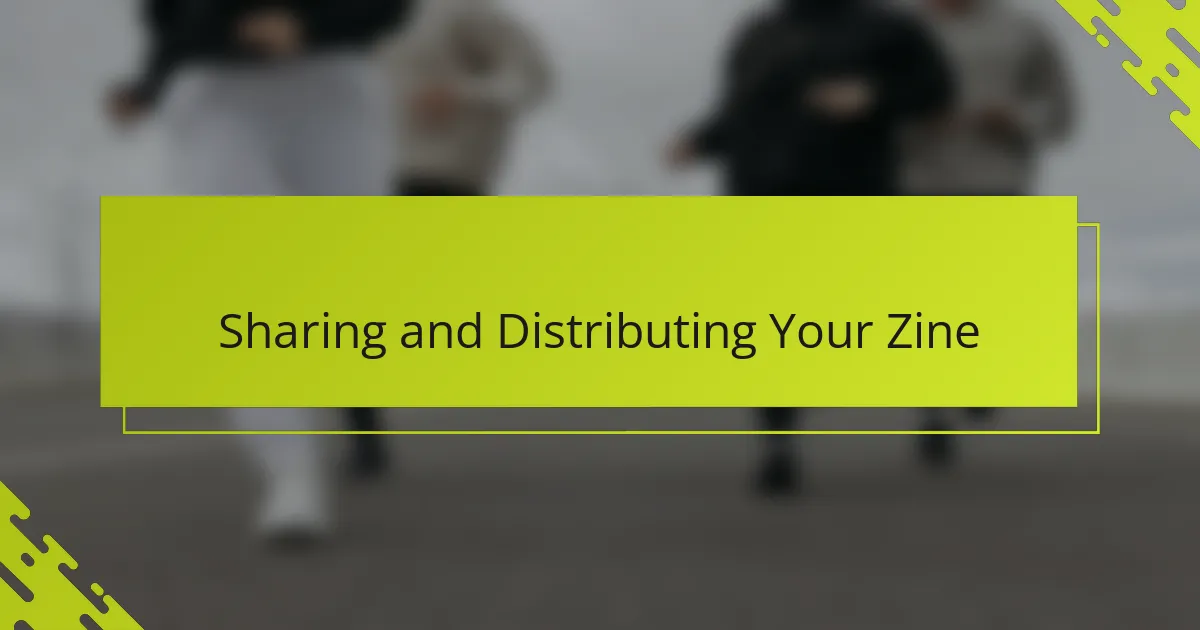
Sharing and Distributing Your Zine
Sharing my zine brought a wave of nervous excitement—would people connect with these intimate pages as I hoped? I chose to distribute copies at local queer events and community centers, places where I felt the spirit of collaboration and support was alive. There’s something incredibly rewarding about watching someone’s face light up when they discover a story that feels like it was written just for them.
I also experimented with mailing out a limited number of zines to friends and strangers who expressed interest online. That process felt like a delicate exchange, a tangible thread weaving through hands across distances. Have you ever sent something small but meaningful into the world and wondered where or how it lands? For me, each envelope sent carried hope and connection layered between its pages.
What I found surprisingly fulfilling was how informal sharing—leaving zines in cafés or at bookshops—created unexpected moments of community. Strangers became participants in a shared dialogue, even if only for a moment. Isn’t it powerful when something so small sparks a sense of belonging beyond the pages?
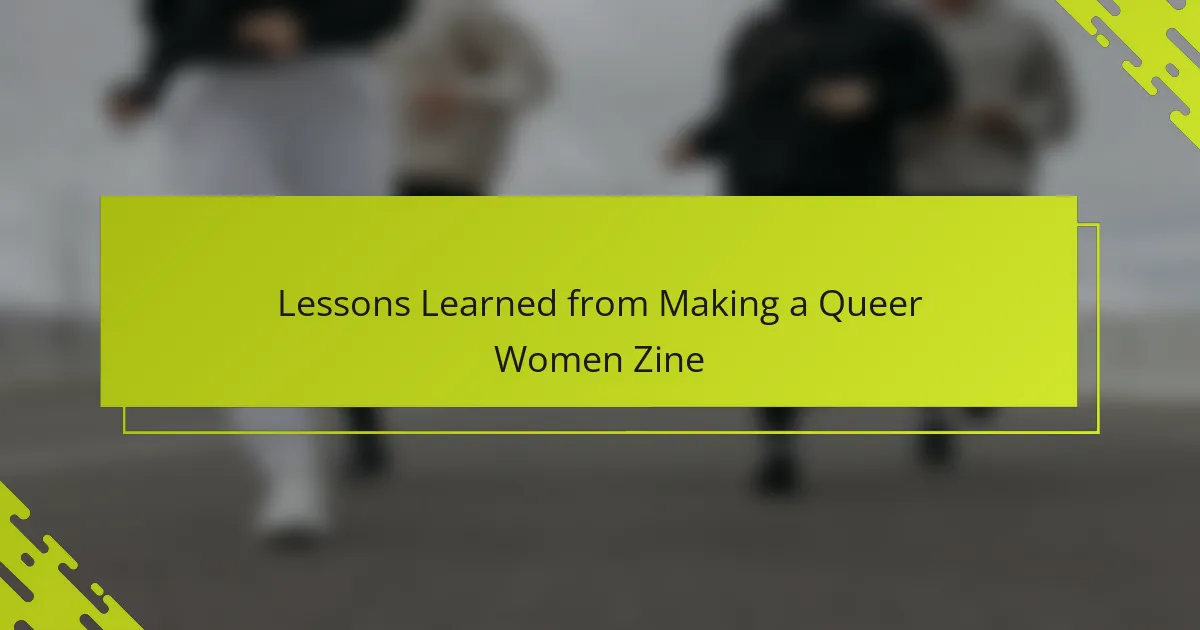
Lessons Learned from Making a Queer Women Zine
One key lesson I learned was how vital it is to create space for diverse voices within queer women culture. I quickly realized that focusing on inclusivity isn’t just a box to tick—it’s the heartbeat of the entire zine. Have you ever noticed how a single overlooked story can expand your understanding in unexpected ways?
Another thing that stood out to me was the need to embrace imperfection throughout the process. From quirky layouts to unexpected printing mishaps, these “flaws” became part of the zine’s personality and made it feel more genuine. It reminded me that authenticity always resonates louder than polish or perfection.
Lastly, making the zine taught me about the power of connection—not just between the creators and readers but among the community itself. Seeing people respond with enthusiasm or share their own stories made me understand that zines aren’t just publications; they’re living conversations. Don’t you think that’s what makes this whole journey so meaningful?
